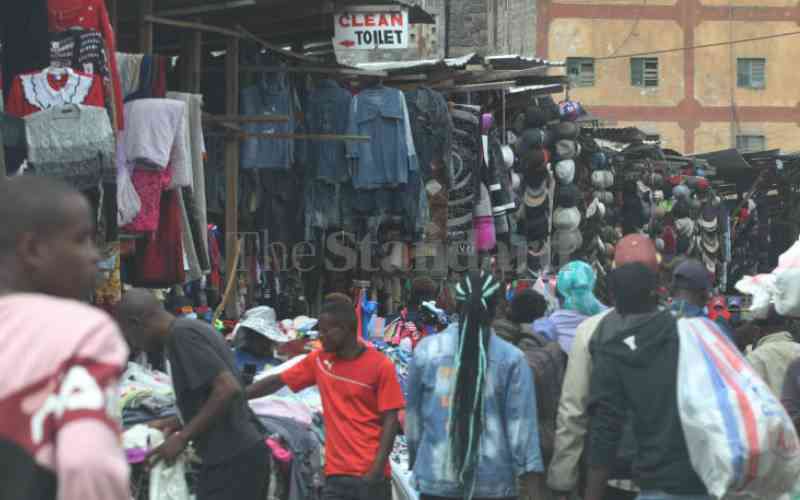By Phares Mutembei
The Kaarani people of Tharaka have undergone some sort of baptism by fire. For years, they watched as large sections of their villages were rendered inhospitable by an avalanche of human waste.
They jumped over the mounds dotting every path as they headed to hospital to seek treatment for cholera or diarrhoea – but they never associated their illnesses with the faeces.
Their children were particularly susceptible. They were infected with intestinal parasitic worms through contact with soil that had been contaminated with human waste from infected people, or by eating contaminated food.
They suffered from malnutrition, anaemia and retarded growth. Other infections that threatened to cripple entire villages included trachoma (which can lead to blindness), bilharzia and typhoid, among others.
The big number of patients overwhelmed Rukenya dispensary and the district hospital at Marimanti.
A few years ago, the villagers decided to put an end to this suffering. The diseases and absenteeism from work and school was taking a toll on their productivity and education.
Unsightly mounds
“We had people relieving themselves in farms, by the roadside and along footpaths. Even by riverbanks, imagine! Vast areas were covered by unsightly mounds of waste,” says Patrick Kathenya, assistant chief of Kaguma location who led residents in taking stock of what had gone wrong.
They found out that few homesteads had pit latrines.
Says Kathenya: “As leaders of the community, it fell upon us to remedy the situation.”
It was time for mass action for the villagers to save themselves and their children from the maladies of shockingly poor sanitation.
They formed a group and went around villages to assess the situation.
“We literally sniffed the air. Anytime a whiff of unpleasant air hit us, we searched the area and collected the faeces. We picked from footpaths, farms, bushes. . . everywhere.”
The group collecting the waste was composed of old and young men, accompanied by their wives, sisters, brothers and children.
Stay informed. Subscribe to our newsletter
John Kinyamu, 53, of Iriani village says it was a humiliating experience for the villagers to collect their own faeces.
“But it had to be done to clean up our environment and rid us of diseases. My children had been particularly hard hit by diseases and worms and always missed school. I spent a lot of money at the health centre. That is why I was ready to join others in collecting faeces around our village. We even went to the neighbouring village to help them do the same thing,” adds Kinyamu.
Degrading enough
As if collecting their waste was not degrading enough, the villagers brought their collection to a central point, where local leaders and health officials took time to educate them on sanitation, one of the major challenges afflicting them.
But this was not before they had tallied the entire collection, for the purpose of appreciating their hard work and triggering change.
Saya Severina Gatiria, a 37-year-old mother of two small children, says of the activity, “We were ashamed. We had collected an enormous amount. No wonder most of us were spending more time at the hospital than in our farms working.”
The villagers decided to ensure that every homestead had a pit latrine.
The health workers, provincial administration and partners launched a massive education campaign to improve the community’s health.
Now the change is visible. Villagers boil water before drinking it. They also wash their hands every time they visit the toilet.
The water for this purpose is strategically so that they can’t miss it when they leave the latrine.
There are ‘area managers’ the villagers appointed to constantly teach others about hygiene.
Young men readily dig pit latrines for the elderly and sickly. The possiblity of stepping on human waste is now remote.
Indeed change has come to these villages.
 The Standard Group Plc is a
multi-media organization with investments in media platforms spanning newspaper
print operations, television, radio broadcasting, digital and online services. The
Standard Group is recognized as a leading multi-media house in Kenya with a key
influence in matters of national and international interest.
The Standard Group Plc is a
multi-media organization with investments in media platforms spanning newspaper
print operations, television, radio broadcasting, digital and online services. The
Standard Group is recognized as a leading multi-media house in Kenya with a key
influence in matters of national and international interest.
 The Standard Group Plc is a
multi-media organization with investments in media platforms spanning newspaper
print operations, television, radio broadcasting, digital and online services. The
Standard Group is recognized as a leading multi-media house in Kenya with a key
influence in matters of national and international interest.
The Standard Group Plc is a
multi-media organization with investments in media platforms spanning newspaper
print operations, television, radio broadcasting, digital and online services. The
Standard Group is recognized as a leading multi-media house in Kenya with a key
influence in matters of national and international interest.









